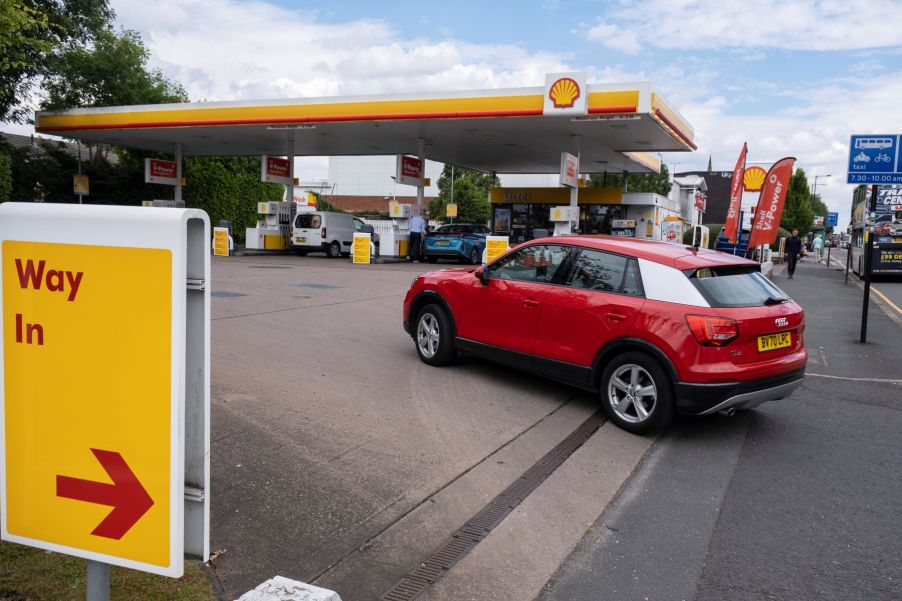
3 Reasons Why Gas Cars Get Worse Gas Mileage in the City Compared to the Highway
Fuel economy figures for new gas-powered cars are always given in threes: The fuel economy on the highway, the gas mileage in the city, and an average figure. A common trend with these numbers is that highway figures are always higher than city figures, indicating better fuel economy on the highway than in the city. So, why is that? Why are internal combustion engine cars less efficient on city roads than highways?
1. Idling wastes a lot of gas
As long as your car’s ICE is running, it’s using fuel. This doesn’t stop just because you’re stuck in traffic and haven’t moved in the last 10 minutes. By idling, your gas mileage is essentially 0 mpg. Nevertheless, the fuel used will depend on the vehicle type and engine size.
The Office of Energy Efficiency and Renewable Energy notes that a compact sedan with a 2.0-liter engine uses about 0.16 gallons of fuel per hour when idling. On the other hand, a much larger 4.6-liter gas engine would use more than double the fuel at 0.39 gallons for the same period. While these fuel consumption figures may not seem like much in the short run, they’ll add up over a long period.
Additionally, city driving makes you more likely to leave your car idling for a few seconds or minutes. It may be because of heavy traffic, stop signs, or traffic lights, among other reasons.
One common misconception about idling is that it uses less fuel than restarting the engine. However, this depends on how long it stays idle. For instance, if you leave it idling for more than 10 seconds, you’d be better off turning off the engine. This is particularly true for modern vehicles, which are much more fuel efficient at starting up than older generations.
Nonetheless, turning off the engine and starting it again in traffic is impractical, which is where the auto on/off systems available in newer models come in handy.
2. Constant starting and stopping wastes a lot of gas
Cars are more fuel efficient when they maintain a constant speed, and it’s possible to do this on the highway. It’s also why you get better gas mileage when using cruise control.
However, in city commutes, the roads are smaller, and you have to keep stopping and starting the car due to traffic lights, pedestrians, other motorists, etc. Since you have to overcome inertia when starting, you use a lot more energy, which is bad news for your mpg rating. Furthermore, you lose some energy to heat in the brakes whenever you stop.
However, this only applies to ICEs. Electric vehicles, on the other hand, use regenerative braking. Instead of losing kinetic energy to braking, they convert it back to electrical power, using it to recharge the EV’s high-voltage battery ever so slightly. Consequently, the more you stop, the more the battery recharges. This is one reason EVs have better fuel economy ratings in the city than on the highway.
3. Cities have a variety of road conditions

Even if cities didn’t have as much traffic, or other factors that necessitate starting and stopping your car, road conditions vary widely. You may be driving on pavement one minute, and the next, you’re on damaged tarmac or going over a speed bump. Consequently, maintaining a consistent speed or engine RPM is impossible.
Compared to the smooth unchanging road on the highway, you’ll end up using more fuel due to how often you need to accelerate and decelerate when adjusting to new terrain.


